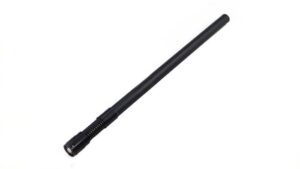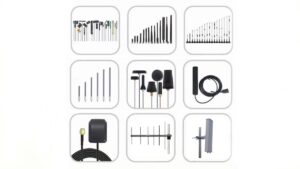This article talks about the available IoT embedded antenna options and influencing factors analysis. How to choose an embedded antenna for IoT applications?
IoT projects rely on wireless connectivity, and the signal of the wireless connection depends on the chip itself as well as the antenna.
Wi-Fi is the preferred choice for portable devices or IP cameras, while industrial applications (such as remote monitoring, smart meters, smart buildings, smart cities, manufacturing automation, smart agriculture, and tracking) are more likely to use LPWAN networks such as NB-IoT, LoRa, SigFox, ISM or cellular networks. Each of these types of networks has a wide variety of embedded antennas.
This article will discuss the embedded antenna options available and some of the factors that influence selection.
How to choose an embedded antenna?
The embedded antenna chosen should fit seamlessly into the PCB layout. In addition to this, it must operate within the required range, operate interference-free, and use reasonable power levels. The performance of all antennas will be verified when it enters the test phase, but a wise selection of the antenna and a design that meets its requirements will give the design a good start.
Smaller antennas seem to be the best, but there is more to consider. The topology of an antenna determines its efficiency, bandwidth, radiation direction, and gain, so the smallest antenna may not be the best choice.
There are also many design factors to consider, including the antenna’s distance from other components, the antenna’s location on the board, the antenna’s grounding requirements, and the level of interference in the environment in which the device will be used.
PCB antennas
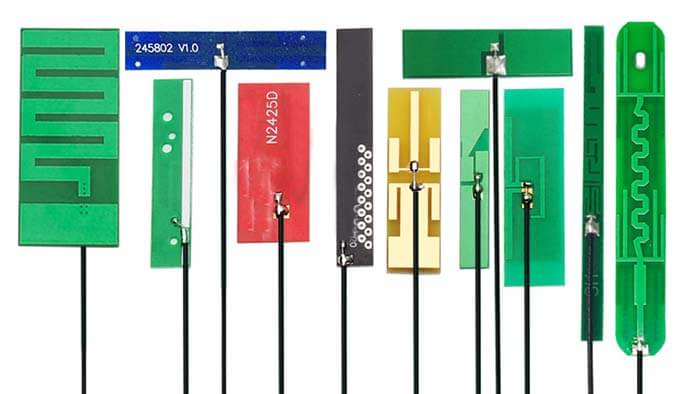
How to choose an embedded antenna PCB antenna?
PCB antennas used to be the obvious choice. They are relatively inexpensive and can be replicated quickly on a large scale.
However, they take up 10 times the space of modern chip antennas. Because they are purely two-dimensional, they do not provide the same space-saving features as planar inverted F antennas (PIFA), chips, or even patches. In practice, they can be difficult to tune, as small changes in board material or component layout can affect their performance, and they are not easily optimized for the device.
Ceramic Patch Antennas
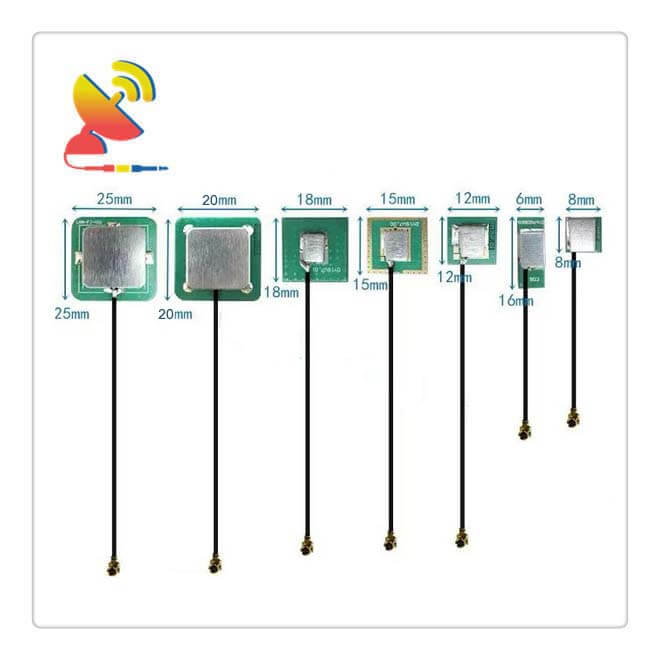
How to choose an embedded antenna ceramic patch antenna?
Ceramic patch antennas are popular for positioning applications and can work well on vehicles, but their popularity has declined for a number of reasons.
First, they are very directional and must be pointed directly at the sky to operate effectively. Smaller ceramic patch antennas can be expensive, but they perform differently because of their reliance on ceramic materials that transmit and receive RF energy.
Smaller patch antennas tend to support only narrow bands, so where wider frequencies are needed, other types of antennas are more suitable.
PIFA antennas
How to choose an embedded antenna PIFA antenna?
PIFA antennas have become the de facto wireless solution. They are now commonly found in cell phones, wearables, and small IoT devices, mainly because they can offer high levels of performance and a small form factor, but also because they are widely available and inexpensive. They resonate at a quarter wavelength, producing good SAR characteristics.
All of this makes PIFAs the best choice for engineers. They are easy to integrate, and circuit matching involves only a simple matching circuit. One more advantage: they can be placed on top of the PCB ground plane, thus allowing components to be placed under the antenna. PIFA is currently the most popular antenna topology because of its small size and its ability to provide high levels of performance.
ESA antenna (Electrically small antenna)
How to choose an embedded antenna ESA antenna?
ESA antennas, or electrically small antennas, are much shorter than their specified wavelength. While some antennas operate on ¼ or ½ of the grounding layer, Esa (Electrically small antenna) can be as small as 1/10 of the wavelength.
Some of the world’s earliest antennas used this topology, and recently their performance has improved greatly in terms of gain, bandwidth, and field patterns. These antennas may be small, perhaps less than 20 mm. They are relatively unaffected by proximity and detuning and can be adjusted to their capacity relatively easily using a technique called beam control.
Magnetic loop antennas
How to choose an embedded antenna magnetic loop antenna?
Finally, magnetic loop antennas are coupled to the magnetic field waves in the area near the antenna. They work perfectly in ultra-small devices that require a high level of performance and a compact form factor. They have anti-distortion properties and are ideal for wearable and handheld devices, where PCB space is compact and performance is critical.
Other antenna types and topologies
SMDs are not the only solution for embedded antennas; there are other antenna topologies that may be useful for certain IoT and embedded designs.
There are also flex antennas and external antennas, both of which have advantages; flex antennas are not mounted directly on the PCB and do not require a ground plane. External antennas are located on the outside of the device, work well in a variety of ground plane sizes, and work effectively in free space, simplifying antenna integration.
Flexible PCB antennas
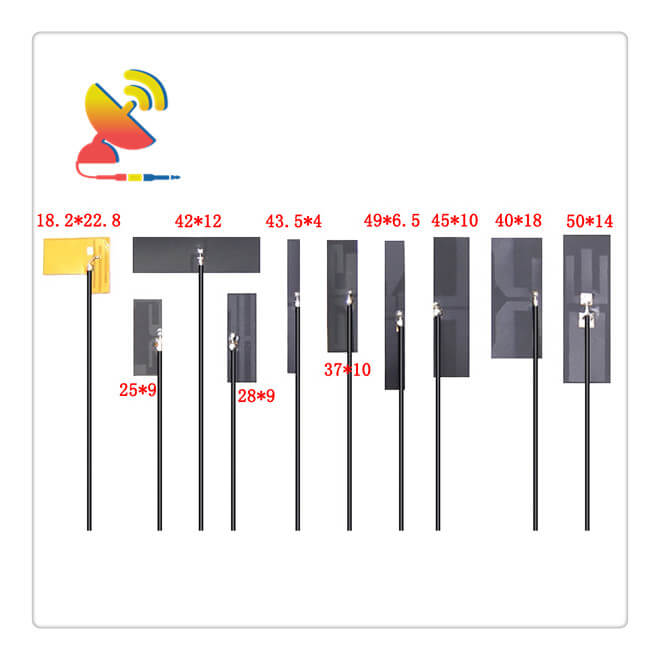
How to choose an embedded antenna flexible PCB antenna?
If there is not much space inside the device, a flexible PCB antenna (FPC) may be a good choice. the FPC does not need to be placed on the actual PCB, it is connected to the system via its own integrated I-PEX cable.
Flexible circuit boards do not require a ground plane, so they can be tucked into the device enclosure. This helps save space on the PCB, but the integration of the FPC antenna requires care, as the cable can also radiate interference just like the antenna.
The flexible antenna, located inside the housing of the device, is connected to the board via a cable and I-PEX connector.
Terminal antennas
How to choose a terminal antenna?
Terminal antennas can provide access to the highest performance when the application requires mission-critical wireless performance, especially in environments where other RF noise is present. These antennas are much larger and mounted on the outside of the device.
They can achieve excellent performance in free space without any in-device tuning or matching.
Board Size and Layout: Space Saving
The size and layout of your PCB design may determine your choice of antenna. Space is always at a premium, so a compact, the low-profile antenna is usually a good choice.
Remember that the antenna should be located away from other sources of noise, such as batteries, motors, and metal parts of the design, which can cause interference and affect the wireless performance of the device.
If the device’s enclosure is made of metal, its housing may cause problems, so a plastic enclosure is often a safer choice.
If space is tight, a chip antenna designed to work on one edge or one corner of the PCB is a good choice to save useful space on the board.
If the antenna is designed in a corner, it may be available in both left and right options, providing the designer with more placement options on the PCB. The manufacturer’s data sheet will explain exactly how the antenna should be positioned and integrated into the design.
IoT Environment
Finally, a good wireless design should fit the environment.
IoT solutions are often found in commercial and industrial environments. IoT applications are found in factory automation, vehicle and container tracking, and metering solutions for smart buildings.
However, these may not be good environments for RF. Wireless performance may be compromised when there are metal objects, motors, other wireless devices, or even people nearby.
Testing the design in a darkroom is a way to demonstrate the device’s performance in a perfect environment, but each prototype should also be tested in its real working environment. Testing is the first step in achieving a working design and gaining regulatory approval.
Besides the How To Choose Embedded Antenna For IoT article, you may also be interested in the below articles.
PCB Antenna VS. External Antenna
Ceramic Antenna VS. PCB Antenna, A Comparison Guide
Wifi vs. 5G, is 5G better than Wifi?
Mobile Networks’ Evolution From 1G To 5G


